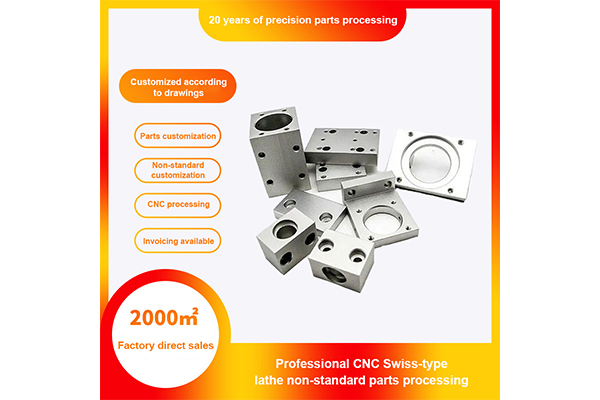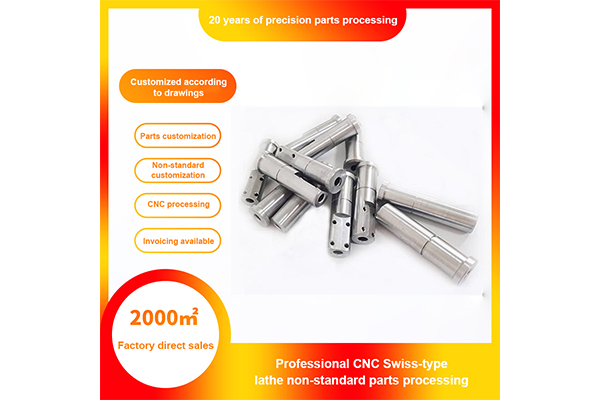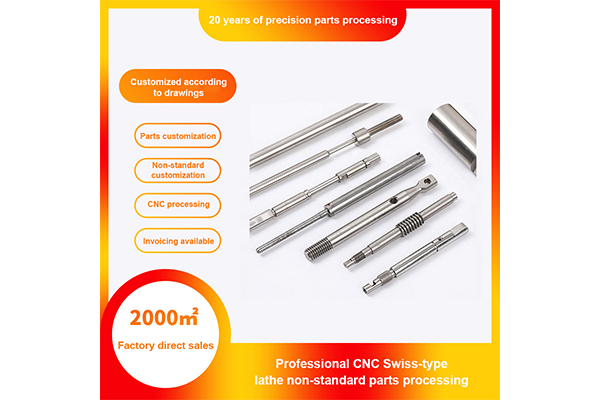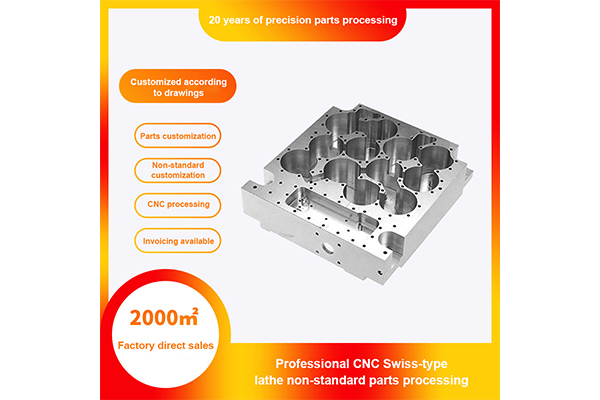How to avoid the loss of precision due to tool wear when machining precision parts?
Release Time : 2025-04-03
In the field of precision parts machining, tool wear is one of the core factors affecting machining accuracy. As a high-precision machining equipment, CNC (CNC milling machine) often achieves micron-level machining accuracy, and tool wear will directly lead to dimensional deviation, deterioration of surface roughness and even scrapping of workpieces. Therefore, how to effectively suppress tool wear through technical means and management strategies has become the key to ensuring machining accuracy.
The root cause of tool wear lies in the combined effects of high temperature, high pressure, friction, etc. during the cutting process. For example, in the machining of aluminum alloy or titanium alloy, the heat generated when the tool edge contacts the workpiece will cause the material to soften and accelerate the cracking or wear of the tool edge. To solve this problem, we must first start with tool materials and geometric parameters. Modern CNC machining generally uses high-performance tool materials such as cemented carbide, ceramics or polycrystalline diamond (PCD), whose heat resistance and wear resistance far exceed traditional high-speed steel. At the same time, the geometric parameters of the tool (such as rake angle, back angle, and cutting edge radius) need to be optimized according to the characteristics of the processing material. For example, when processing aluminum alloy, the use of a large rake angle tool can reduce the cutting force and reduce the friction between the tool and the workpiece.
The reasonable setting of cutting parameters is the core of controlling tool wear. In computer gong cnc machining, the cutting speed (Vc), feed rate (f) and cutting depth (ap) need to match the tool, workpiece material and machine tool performance. For example, high-speed cutting (HSC) technology can reduce the contact time between the tool and the workpiece by increasing the spindle speed and feed rate, thereby reducing the accumulation of cutting heat. However, it should be noted that excessive cutting speed may cause the tool edge to melt, so it is necessary to combine the cooling system (such as high-pressure cooling or minimal lubrication MQL) to achieve thermal management. In addition, intelligent programming software can automatically generate optimal cutting parameters based on material properties to avoid errors caused by human experience.
Tool wear monitoring and life management are important links in preventing precision degradation. Modern CNC systems integrate tool wear sensors that can monitor tool vibration, power consumption or acoustic emission signals in real time, and warn of tool failure risks in advance. For example, when the tool wear reaches the set threshold, the system can automatically pause the processing and prompt to change the tool. In addition, the tool life management system (TLM) can record the use time, cutting parameters and number of workpieces of each tool, and predict the remaining life of the tool in combination with big data analysis to avoid fluctuations in accuracy caused by excessive use of the tool.
The optimization of the processing technology should not be ignored either. For example, in the processing of precision parts, the "step cutting" strategy can be adopted to remove most of the excess by rough machining first, and then gradually approach the final size through semi-finishing and finishing, so as to reduce the wear of the tool in the final processing stage. In addition, process parameters such as the stability of workpiece clamping, the concentration and flow rate of cutting fluid should also be strictly controlled to avoid abnormal tool wear caused by vibration or insufficient lubrication.
The decrease in accuracy caused by tool wear is not uncontrollable. Through high-performance tool materials, optimized cutting parameters, intelligent monitoring and process improvement, computer gong cnc machining can minimize the impact of tool wear on accuracy. This not only improves the processing quality of precision parts, but also provides technical guarantee for high value-added manufacturing.
The root cause of tool wear lies in the combined effects of high temperature, high pressure, friction, etc. during the cutting process. For example, in the machining of aluminum alloy or titanium alloy, the heat generated when the tool edge contacts the workpiece will cause the material to soften and accelerate the cracking or wear of the tool edge. To solve this problem, we must first start with tool materials and geometric parameters. Modern CNC machining generally uses high-performance tool materials such as cemented carbide, ceramics or polycrystalline diamond (PCD), whose heat resistance and wear resistance far exceed traditional high-speed steel. At the same time, the geometric parameters of the tool (such as rake angle, back angle, and cutting edge radius) need to be optimized according to the characteristics of the processing material. For example, when processing aluminum alloy, the use of a large rake angle tool can reduce the cutting force and reduce the friction between the tool and the workpiece.
The reasonable setting of cutting parameters is the core of controlling tool wear. In computer gong cnc machining, the cutting speed (Vc), feed rate (f) and cutting depth (ap) need to match the tool, workpiece material and machine tool performance. For example, high-speed cutting (HSC) technology can reduce the contact time between the tool and the workpiece by increasing the spindle speed and feed rate, thereby reducing the accumulation of cutting heat. However, it should be noted that excessive cutting speed may cause the tool edge to melt, so it is necessary to combine the cooling system (such as high-pressure cooling or minimal lubrication MQL) to achieve thermal management. In addition, intelligent programming software can automatically generate optimal cutting parameters based on material properties to avoid errors caused by human experience.
Tool wear monitoring and life management are important links in preventing precision degradation. Modern CNC systems integrate tool wear sensors that can monitor tool vibration, power consumption or acoustic emission signals in real time, and warn of tool failure risks in advance. For example, when the tool wear reaches the set threshold, the system can automatically pause the processing and prompt to change the tool. In addition, the tool life management system (TLM) can record the use time, cutting parameters and number of workpieces of each tool, and predict the remaining life of the tool in combination with big data analysis to avoid fluctuations in accuracy caused by excessive use of the tool.
The optimization of the processing technology should not be ignored either. For example, in the processing of precision parts, the "step cutting" strategy can be adopted to remove most of the excess by rough machining first, and then gradually approach the final size through semi-finishing and finishing, so as to reduce the wear of the tool in the final processing stage. In addition, process parameters such as the stability of workpiece clamping, the concentration and flow rate of cutting fluid should also be strictly controlled to avoid abnormal tool wear caused by vibration or insufficient lubrication.
The decrease in accuracy caused by tool wear is not uncontrollable. Through high-performance tool materials, optimized cutting parameters, intelligent monitoring and process improvement, computer gong cnc machining can minimize the impact of tool wear on accuracy. This not only improves the processing quality of precision parts, but also provides technical guarantee for high value-added manufacturing.







